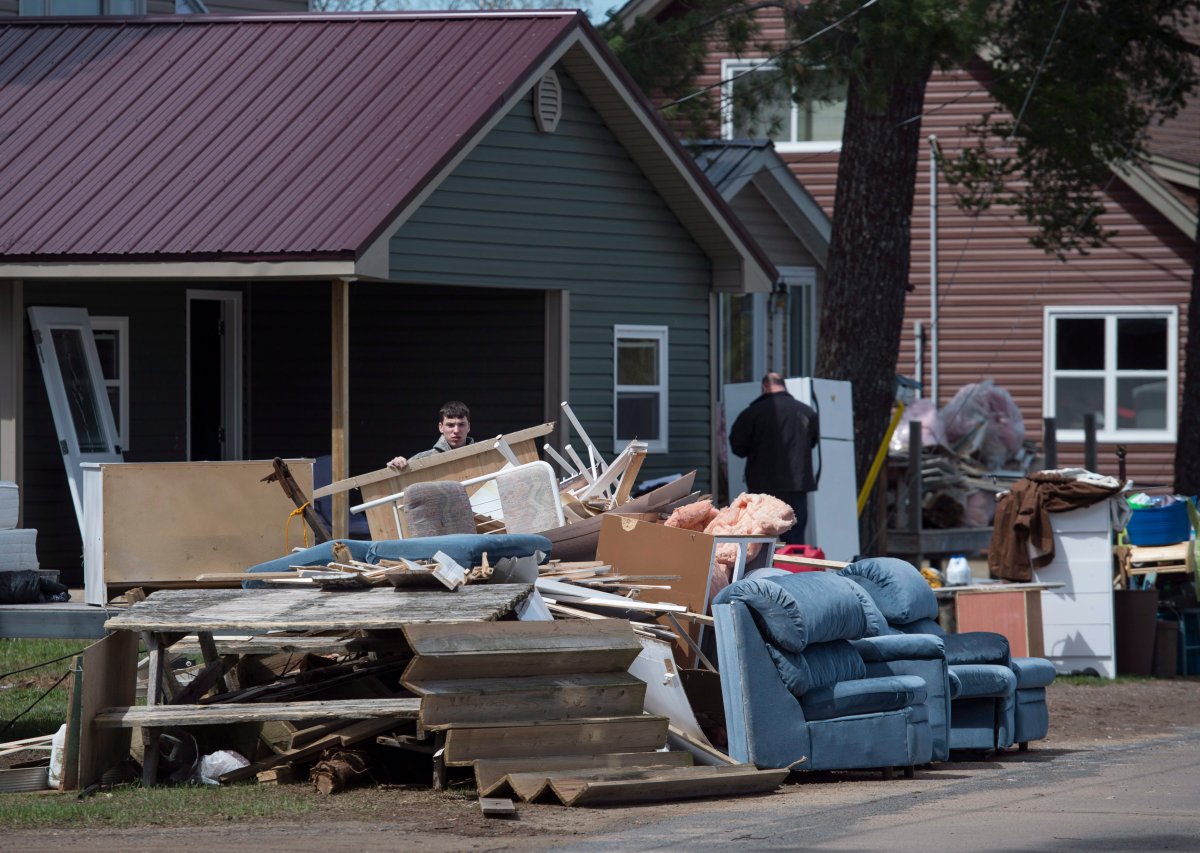The waters continue to recede after the catastrophic floods much of New Brunswick experienced this month. As the cleanup begins, the New Brunswick government has released its safety tips for those starting the cleanup process.

The province recommends New Brunswickers begin cleaning their properties once flood waters have receded and it is safe to do so.
“Past experience has shown that starting the cleanup process quickly can help reduce loss and damage to property,” the New Brunswick Emergency Measures Organization (EMO) said in a release.
READ MORE: Water levels in most N.B. communities expected to drop below flood stage
The EMO says that once people are able to enter the properties, they should remove water-soaked walls and insulation in order to allow the space and studding to thoroughly dry.
Insulation that has become waterlogged is no longer effective, while walls constructed out of gyprock, plaster or wood will be able to dry in time.
In order to safely remove and perform clean up, the province recommends following these safety measures:
- Wear protective equipment, including gloves, a mask and goggles, to protect eyes, mouth and skin during cleanup.
- Any items that were wet with flood water and cannot be cleaned and dried completely within 24 to 48 hours should be taken outside.
- Take photos of discarded items for filing insurance claims.
- Open all doors and windows while working, and leave them open when leaving the house if possible.
- When electricity is safe to use, use fans and dehumidifiers to remove moisture.
- Do not mix bleach and ammonia in particular, because it can create toxic vapours.
- Dry the home and everything in it quickly – within 24 to 48 hours if possible.
If you’re looking to dispose of sandbags used during flood prevention, New Brunswick’s department of environment is encouraging people to arrange for pickups or dropping the sandbags off at their local landfill.
If those aren’t available, the province says New Brunswickers may dispose of the sandbags as part of their flood-related debris.
WATCH: Justin Trudeau tours flood-stricken New Brunswick communities

Free flood cleaning kits
The Canadian Red Cross is offering flood cleaning kits to the province’s citizens who are now able to safely re-enter their homes and begin cleanup. The kits, which are limited to one per household, are self-contained in a 20-litre plastic container filled with useful items, such as a mop, broom, squeegee, scrub, work gloves, masks, garbage bags and a bleach-based cleaner.
Free kits can also be picked up at its offices at 120 MacDonald Street in Saint John, N.B., and 318 Maple Street in Fredericton, N.B., from 8:30 a.m. until 7 p.m., including during weekends.
“If residents find sewage has backed up into their home, they should wear rubber boots and waterproof gloves if in contact with water and during cleanup,” said the Red Cross in a release.




Comments